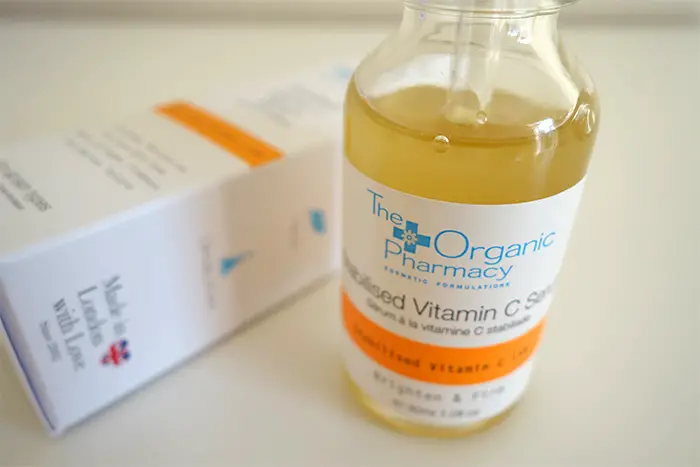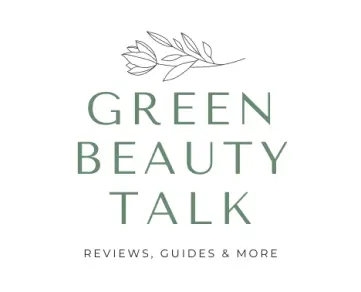Azelaic acid and Vitamin C are two potent A-list skincare ingredients used to improve the skin in various ways. Both are recommended by dermatologists for their effectiveness in improving the skin’s texture. In this post, we talk about how these two acids can be used in a skincare routine and whether or not they can be used together.
Table of Contents
- What is Azelaic Acid?
- What is Vitamin C?
- Azelaic Acid or Vitamin C: Which is Better for Hyperpigmentation?
- Can Azelaic Acid and Vitamin C Be Used Together?
- How to Combine Azelaic Acid and Vitamin C
- Which is Better: Azelaic Acid or Vitamin C?
What is Azelaic Acid?
Azelaic acid is a natural acid found in the skin produced by a naturally occurring yeast called Malassezia furfur. It can be derived from grains such as wheat, barley, and rye. However, synthetic versions exist that are used for topical skincare products too.
Azelaic acid is commonly used at a 15-20% concentration as a topical treatment for acne, due to its antibacterial properties that kill acne-causing bacteria. It is regularly recommended for the treatment of mild to severe acne and although a very potent acid, it is safe to use on all skin types.
Studies reveal that Azelaic acid is more effective than 2% hydroquinone in treating acne without the latter’s side effects.
Although not classified as a chemical exfoliant, azelaic acid exfoliates dead skin cells on the surface of the skin resulting in a more even tone. It is more gentle than alpha hydroxy acids (AHA) like glycolic, lactic, and mandelic acids.
Benefits of azelaic acid:
- Can exfoliate the skin and unclog pores
- Acts as a tyrosinase inhibitor to reduce and prevent hyperpigmentation and fade acne scars.
- Reduces inflammations and soothes acne and rosacea breakouts
- Helps treat and prevent acne breakouts
What is Vitamin C?
Vitamin C also called L-ascorbic acid is a strong antioxidant that is naturally present in the skin. This compound protects the skin from free radicals and UV rays that our skin cells are exposed to on a daily basis. It is used to improve the skin’s texture and skin tone.
Vitamin C can be derived from fruits such as citrus fruits. However, for sustainability and stability reasons, a lab-engineered version of this compound is used to produce more effective skincare products.
Because of how unstable this molecule is, vitamin C products usually have a short shelf life and are stored away from the sun and in dark containers to prevent oxidization. Although, there is also a stabilised version of vitamin C which doesn’t degrade that easily.

Benefits of vitamin C on the skin:
- Helps fade dark spots and hyperpigmentation
- Boosts the formation of collagen for firmer and youthful-looking skin
- Tightens the skin and reduces the appearance of fine lines and wrinkles
- Calms inflammation and redness on the skin
- Works alongside sunscreen actives to protect the skin from UV rays
- It reduces transepidermal water loss in the skin to maintain its hydration levels
- Brightens the skin by accelerating the turnover of skin cells
- Replenishes vitamin E, another antioxidant that reduces oxidative stress the skin is exposed to
Azelaic Acid or Vitamin C: Which is Better for Hyperpigmentation?
Azelaic acid and Vitamin C are usually presented as alternatives to Hyrdoquinone for treating hyperpigmentation. Scientific evidence shows that Azelaic acid is better at treating hyperpigmentation than Vitamin C.
This review revealed that, Vitamin C is not effective enough to be used on its own to treat pigmentation issues like melasma. L-ascorbic acid is a very unstable molecule and is often combined with other depigmenting agents.
Azelaic acid is proven to be more effective than 2% hydroquinone and as effective as 4% hydroquinone as a stand-alone treatment for melasma. And this without all the side effects.
Can Azelaic Acid and Vitamin C Be Used Together?
When introducing active ingredients in your skincare routine, you need to pay attention to ingredients that may cancel out each other or induce severe irritation on the skin when applied together.
The good news is azelaic acid and vitamin C are safe to use together in the same routine.
However, keep in mind that both are potent ingredients, as such, it is preferable to space them out between your morning and evening routine.
For optimal results, it is preferable to use Vitamin C during your morning routine as its anti-oxidant effect will protect your skin from free radicals and UV during the day. Then apply azelaic acid at night.
How to Combine Azelaic Acid and Vitamin C
When applying products in your skincare routine, water-based or lighter textures are always layered before oil-based or heavy creams for optimal penetration.
Vitamin C is usually formulated in water-based forms while its derivatives are usually oil-based.
Azelaic acid, on the other hand, is usually made in the form of creams and gels. As such when using vitamin C and azelaic acid together, the former always comes before the latter.
You can equally opt to alternate between both in your morning and night routine. For example, In the morning, apply your vitamin C serum after your toner. Then switch Vitamin C for azelaic acid at night.
Which is Better: Azelaic Acid or Vitamin C?
These two elements have considerable strengths and a few weaknesses which may make choosing between them difficult.
Azelaic acid may be more effective at treating and preventing melasma, acne breakouts, and calming rosacea. But it is ineffective in treating certain pigmentary disorders such as freckles, nevi, and senile lentigines. Also, it will take a minimum of 3-4 months to start seeing results which unfortunately will not be permanent.
Vitamin C is a strong antioxidant that helps protect the skin from free radicals and UV lights. It is hydrating, anti-inflammatory, and protects the skin against photoaging.
Vitamin C helps reduce hyperpigmentation by preventing the formation of melanin in the skin.
However, on its own, it is not as strong as other pigmentary treatments such as hydroquinone in combating hyperpigmentation. This makes it more suitable for fading acne scars, and dark spots. It is also when combined with other anti pigmentary compounds that vitamin C is seen to have a strong effect on severe pigmentation issues like melasma.
Knowing this, deciding which is better will greatly depend on the result you want to achieve. Your best bet will be to use them together in your routine as they are highly compatible. So why choose one when you can benefit from both to have radiant skin?
Related content:
Can you use azelaic acid with hyaluronic acid?
Azelaic acid or benzoyl peroxide for inflammatory acne?
Alpha Arbutin vs Azelaic Acid

Petra Nakashian (previously Kravos) is a dedicated natural health and beauty blogger, driven by the loss of her parents to cancer, which led her to meticulously research beauty product ingredients. With over 10 years of experience, her in-depth knowledge has made her a trusted expert in the field. Founder of Be Healthy Now and Green Beauty Talk, Petra recently expanded her expertise with Beauty Insights Hub, exploring a wider range of beauty treatments. Committed to transparency and honesty, her work is a vital resource for navigating the complex world of beauty.

